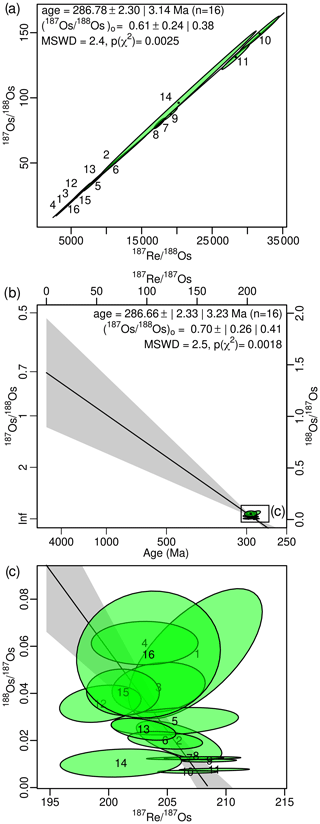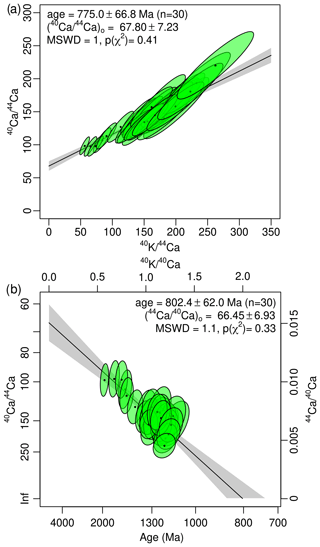Short communication: Inverse isochron regression for Re–Os, K–Ca and other chronometers
Conventional Re–Os isochrons are based on mass spectrometric estimates of and , which often exhibit
strong error correlations that may obscure potentially important geological complexity. Using an approach that is widely accepted in and U–Pb geochronology, we here show that these error correlations are greatly reduced by applying a simple change of variables, using 187Os as a common denominator. Plotting
vs. produces an
“inverse isochron”, defining a binary mixing line between an inherited
Os component whose ratio is given by the
vertical intercept, and the radiogenic ratio, which corresponds to the horizontal intercept. Inverse isochrons facilitate
the identification of outliers and other sources of data dispersion.
They can also be applied to other geochronometers such as the K–Ca
method and (with less dramatic results) the Rb–Sr, Sm–Nd and Lu–Hf
methods. Conventional and inverse isochron ages are similar for
precise datasets but may significantly diverge for imprecise ones. A
semi-synthetic data simulation indicates that, in the latter case, the
inverse isochron age is more accurate. The generalised inverse
isochron method has been added to the IsoplotR toolbox for
geochronology, which automatically converts conventional isochron
ratios into inverse ratios, and vice versa.
Please read the corrigendum first before continuing.
IsoplotR







